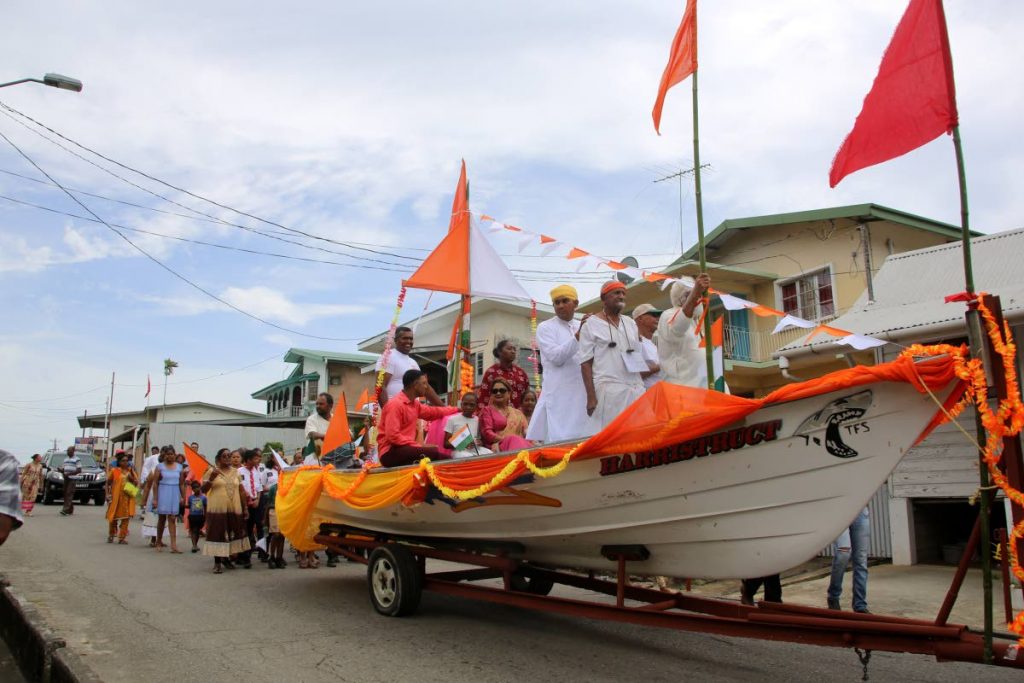Indo-Trinidadians 176 years later

TREVOR SUDAMA
YESTERDAY MARKED the 176th anniversary of the first arrival of Indian immigrant labourers to these shores. I aim to comment on the current status of Indo-Trinidadians after their presence here for over a century and a half.
The position which Indo-Trinidadians occupy today in the political and socio-economic system has been the subject of casual speculation, superficial assessment, platitude-based commentary, myths, half-truths and uninformed conclusions.
In my view, there has been little by way of focused research, fact-based analysis and objective conclusions on the impact of socio-economic and political developments over the years on the fortunes of Indo-Trinidadians. Nor has there been serious examination of the bases of the myths, half-truths and misconceptions associated with the group.
As a result, Indo-Trinidadians exhibit an alarming innocence about their realistic position in the national scheme of things – whether it is the spurious triumphalism of some, the unthinking complacency of others or the placid resignation and acquiescence of the majority in the status quo.
My basic contention is that Indo-Trinidadians do not enjoy a socio-cultural presence, economic power or political influence commensurate with their numbers in the population, of which they now constitute approximately 35 per cent and are the largest single minority. The customary rebuttal that Indo-Trinidadians are dominant in business, the professions and land ownership will be addressed another time.
How much the situation faced by Indo-Trinidadians today was determined by the circumstances of history, how much by deliberate policy and action of the powers that be and how much by their own endeavours or lack of it is a matter of speculation.
The circumstances under which Indian immigrant labour was introduced created some negative, even hostile, responses from all sectors of the society, except the plantation owners who were the beneficiaries of this labour. It appears that these negative views and perceptions of the Indian migrants have endured over time and are revived by other groups in times of tension and conflict.
There are some developments which seem to have been important in the formulation of a less than complimentary view of the migrants. While the majority of them had an association with field labour, many were not prepared for the new experience of the extreme rigours of plantation work.
It is reported that some resorted to a variety of ruses, trickery, dissimulation and deception in order to avoid the intolerable conditions of their new bondage. In doing so, they were characterised as devious, untrustworthy, unreliable, dishonest and for whom the ends justified the means. It is a view of Indo-Trinidadians still echoed today.
The emancipated slaves were made to believe that the migrant workers were scab labour brought in to undermine their claims for higher wages. If research shows that the plantation owners could not have afforded higher wages or that the freed African slaves would have left the inhumane working conditions of the plantations whether or not higher wages were offered, then the designation of scab labour was merely a pretext for opposition to the migrants’ presence. If today Afro-Trinidadians perceive the existence and activities of Indo-Trinidadians as inimical to their own advance, the seeds of such suspicion were sown a long time ago.
Another significant issue was the fact that the migrants’ initial stay was limited by contract to five years, after which they would return to India. Thus, migrants were not regarded as part of the society but as transients who merely enjoyed a temporary sojourn here. With no local roots their loyalty/fidelity was assumed to be to India.
However, with the passage of time the vast majority of Indian migrants and their descendants decided to make Trinidad their permanent home, yet it continued to be assumed that their commitment was to India and that they really did not belong here. Even into the 20th century and after the end of the indentureship in 1917, people of Indian descent domiciled in Trinidad continued to be classified under the heading “Alien” in the census.
If the perception among Afro-Trinidadians was that Indo-Trinidadians did not really belong here and their patriotism was questionable, a logical consequence was that they ought not to be afforded the full benefits of citizenship and that some form of discrimination and exclusion was justified.
To compound the idea of separateness and exclusiveness was the fact that the descendants of the immigrants continued to live in isolated communities and to adhere to their traditional religions of Hinduism and Islam which were alien to dominant mainstream Christianity. Their cultural practices and traditions were seen to be antithetical to the established norms, mores, ethos and values of the wider society.
Since this religious and cultural aloofness persisted and integration into mainstream culture resisted, the Indo-Trinidadian community was seen as recalcitrant and even reactionary and hostile to progressive ideas, practices and national objectives. Even today, in coded or direct language, Indo-Trinidadians are associated with recalcitrant, non-conforming, unco-operative and divisive propensities.

Comments
"Indo-Trinidadians 176 years later"